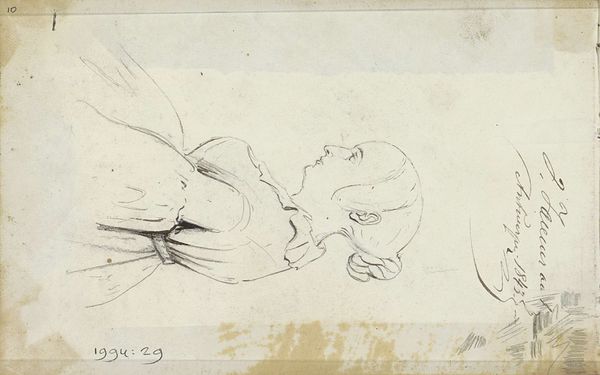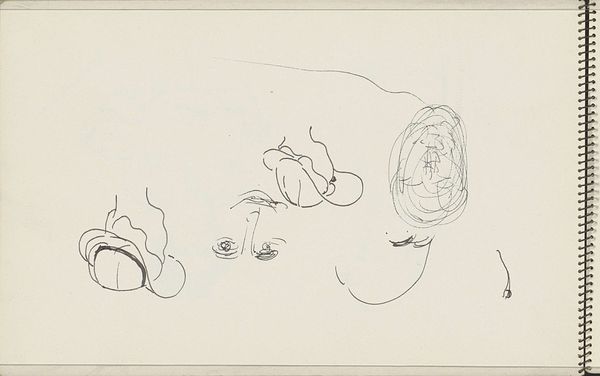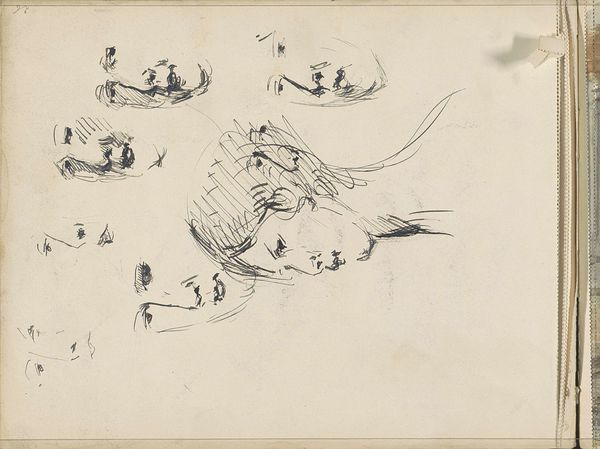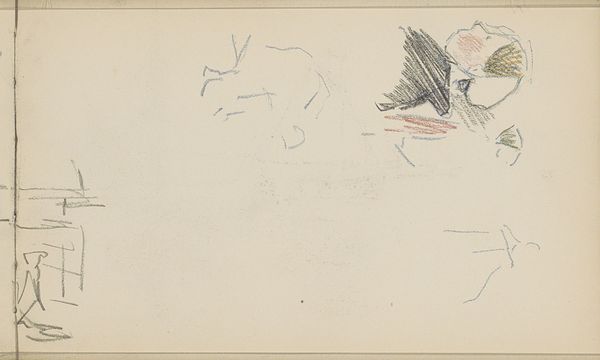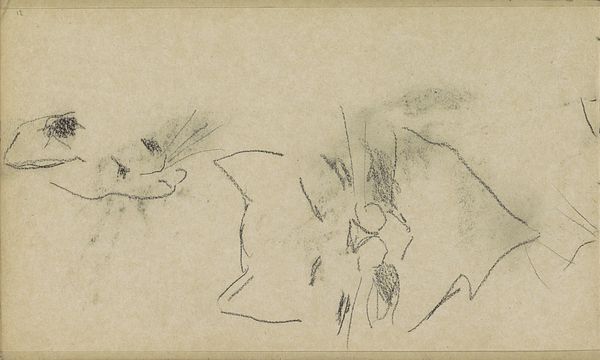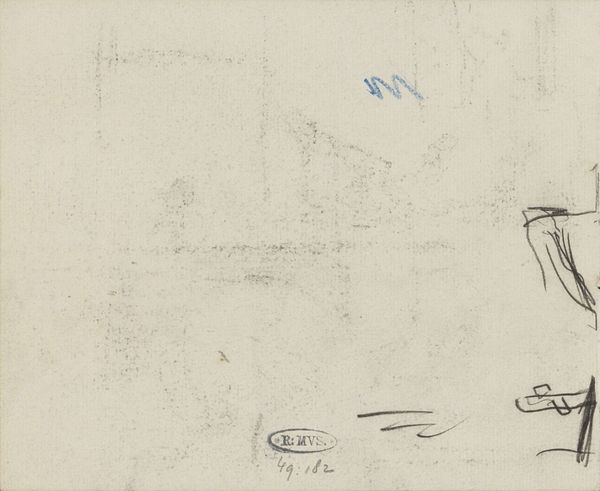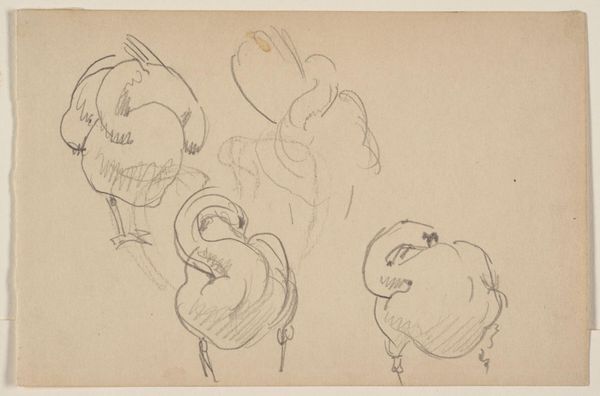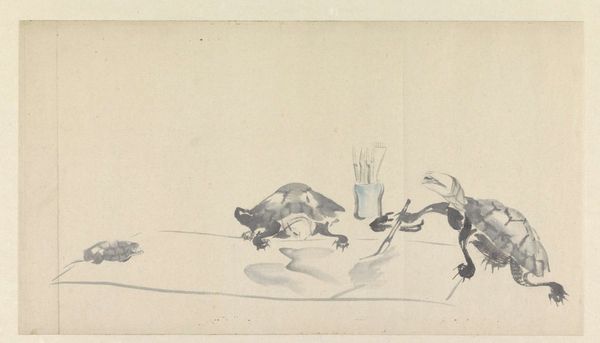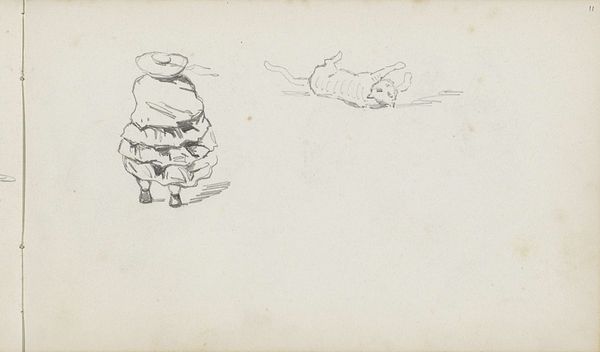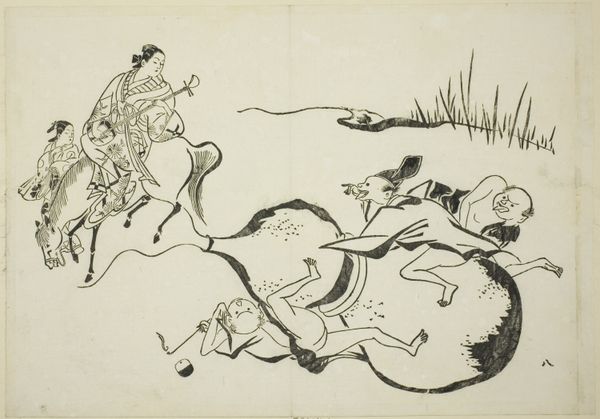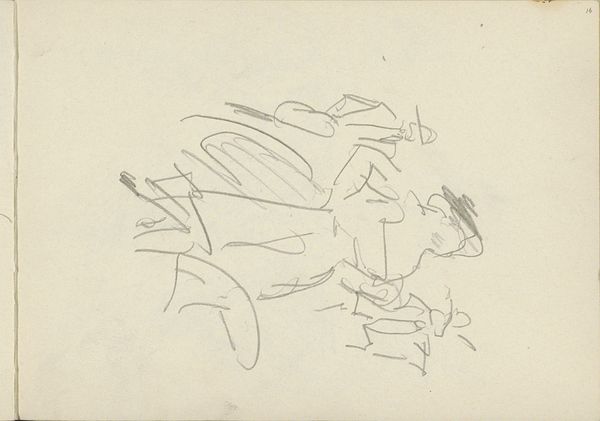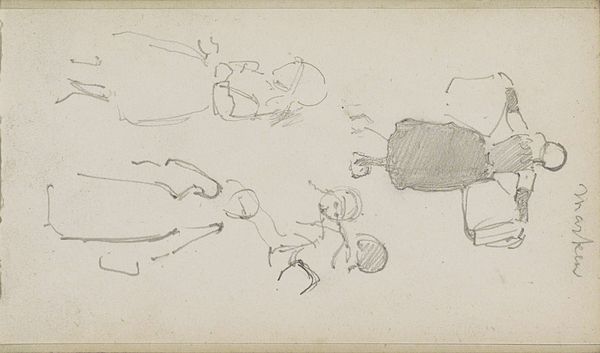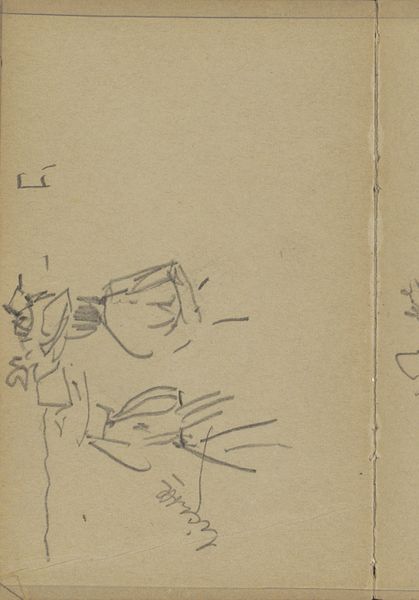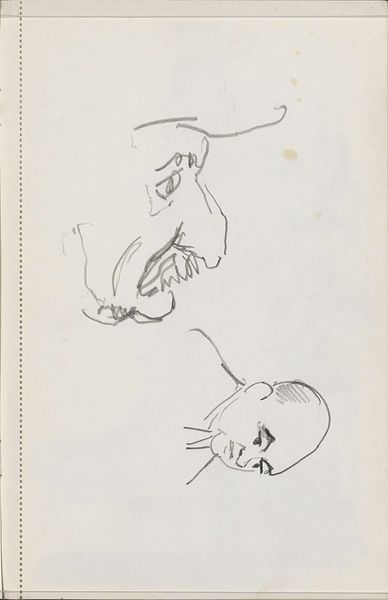
Dimensions: 10 1/8 x 13 11/16 in. (25.7 x 34.8 cm) (image, sheet)
Copyright: Public Domain
Curator: Immediately, what strikes me is the raw vulnerability—exposed little creatures huddling on this pale ground, like secrets whispered in ink. Editor: Indeed. The piece, "White Mice," by Shibata Zeshin, likely created in the 1880s, showcases his masterful use of ink on paper. We can observe his deft hand at work through those delicately applied washes and precisely rendered lines. It's more than just a drawing; it’s an exercise in material economy. Curator: It feels incredibly Zen, doesn’t it? These little guys, are they facing emptiness, or endless possibility? That lone mouse separate from the group…perhaps yearning? Editor: Or, considering the context of Japanese printmaking, we see a lineage of art intended for mass consumption. This wasn’t necessarily about solitary reflection, but production, circulation, and affordability—ink and paper meeting a market demand. The gesture may be refined, but the context suggests a working process embedded in a material reality. Curator: Still, I feel this quietude. Each mark, so consciously placed—the brushstrokes practically breathe. It’s more intimate than just commerce, no? A window into a fleeting moment, even. Editor: Even that "fleeting moment" requires specific pigments, sizing agents in the paper to control absorbency, skilled block carvers perhaps, and distributors getting it into people's hands. Labor isn't silent. Curator: Maybe it's a collaboration then, a little community of creation mirroring the huddled mice. In a way, doesn't seeing all those hands involved deepen the magic, rather than diminish it? Editor: The intersection of many skillful hands definitely lends to it an undeniable resonance, wouldn’t you agree? Curator: Absolutely! Now when I see it, I envision the bustling workshops alongside the artist's solitary concentration, a convergence made palpable through the simplicity of ink and paper. Editor: Thinking about all those unseen laborers does change one's perspective and the overall impression, indeed.
Comments
minneapolisinstituteofart almost 2 years ago
⋮
Capitalizing on the delicate ink tonalities of traditional ink painting, Zeshin created this woodblock print composition of white mice. Mice have long been emblematic of fertility in Japan, and white mice were considered especially auspicious. In Japanese folklore, Daikokuten, the god of agriculture, employs white mice as his messengers. In commemoration of the Year of the Rat in the Asian astrological calendar, artists created the images featuring white mice. It is likely that Zeshin was commissioned to produce this image for such an occasion.
Join the conversation
Join millions of artists and users on Artera today and experience the ultimate creative platform.
